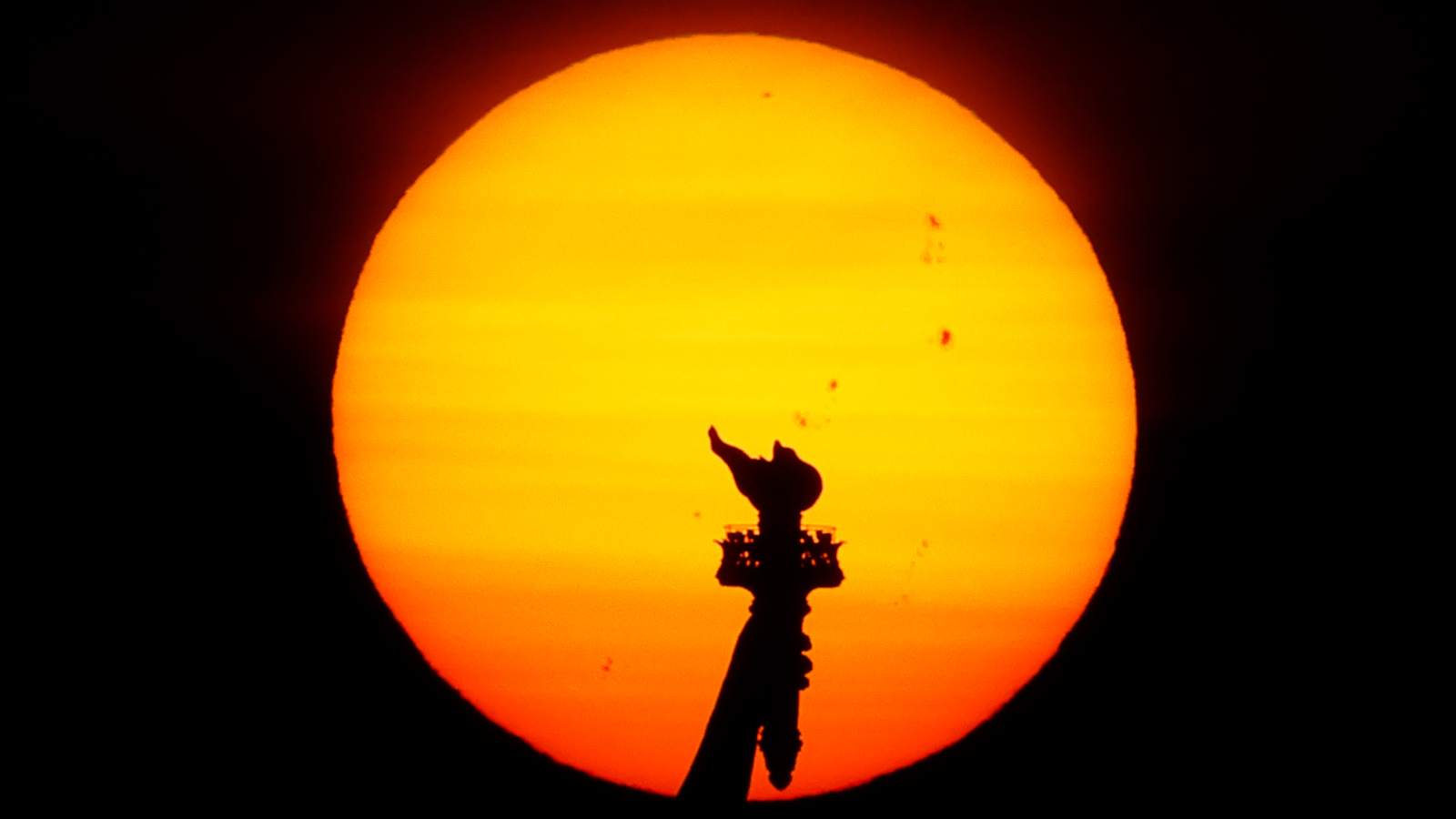Sunspots surge to 23-year high as solar maximum continues to intensify far beyond initial expectations
The average number of visible dark patches on the sun's surface in August was higher than any other month since September 2001. The final count was more than twice as high as experts initially predicted it would be.

The number of black spots peppering the sun's surface in August was the highest for almost 23 years, new data shows. The latest sunspot count was more than twice as high as initial forecasts predicted and is another clear sign that the sun's explosive peak, or solar maximum, is likely well underway — and will be far more active than scientists initially thought.
Sunspots are regions of the sun's surface where surges of electromagnetic radiation break through the star's magnetic field, creating relatively cool patches that appear black to us thanks to an optical illusion. Along with the size and frequency of solar flares and coronal mass ejections, sunspot numbers indicate the progress of the sun's roughly 11-year solar cycle.
During the sun's least active phase, or solar minimum, there are very few or occasionally no sunspots. For example, in late 2019, shortly before the start of the current solar cycle (Solar Cycle 25), there were 40 consecutive days with no visible sunspots. But as the sun's magnetic field gets entangled with itself and weakens, sunspot numbers quickly climb before peaking during solar maximum. During this active phase, the sun's magnetic field eventually snaps and completely flips, which triggers a falling-off period of solar activity and a decrease in sunspots until the whole cycle restarts.
In August, there was an average of 215.5 daily sunspots on our home star's surface, according to the Space Weather Prediction Center (SWPC), which is jointly run by the National Oceanic and Atmospheric Administration and the National Weather Service. The last time the monthly sunspot number was this high was September 2001, during the solar maximum of Solar Cycle 23, when the average was 238.2.
The number of sunspots peaked on Aug. 8, when up to 337 sunspots were observed on the sun, which is the highest total in a 24-hour period since March 2001.
These numbers indicate what some scientists have already suspected — that we have entered solar maximum. However, we can't be certain of this until long after sunspot numbers begin to drop again.
Related: 15 signs the sun is gearing up for its explosive peak — the solar maximum
Get the world’s most fascinating discoveries delivered straight to your inbox.

When the current solar cycle began in 2020, a panel of SWPC scientists predicted that Solar Cycle 25 would be relatively weak compared with historic cycles, much like Solar Cycle 24, which peaked around 2014 and was the weakest maximum for around 90 years. For example, the average sunspot number predicted for August 2024 was 107.8, which is less than half the actual number that has just been released.
The SWPC forecast also suggested that the solar maximum would probably not arrive until 2025.
However, from early on in the current cycle, the sunspot numbers have not matched the initial forecasts. The numbers began to climb in early 2022, reaching an eight-year high by the end of the year. By June 2023, the average number surpassed any of the months from Solar Cycle 24 and has increased ever since.

As a result, SWPC released a "revised prediction" for Solar Cycle 25 in October last year, which forecast that solar maximum would likely arrive by mid-2024 and be more active than expected.
Rising sunspot numbers are not the only indication that we are now living through solar maximum. In early May, Earth was hit with the most powerful geomagnetic storm for more than 21 years, which painted an abnormally large portion of the planet's skies with auroras. And just a few days later, our home star spat out an X8.7 magnitude solar flare — the most powerful solar explosion since 2017.
Solar maximums can last for one to two years or more, meaning there is still a decent chance that activity will continue to ramp up over the next 12 months or so. During Solar Cycle 23, sunspot numbers peaked at a maximum monthly value of 244.3 in July 2000. And in Solar Cycle 22, the monthly record was 284.5 in June 1989.
If solar activity continues to increase and Earth is bombarded with more powerful solar storms, like the 1859 Carrington Event, it could impact ground-based infrastructure, trigger widespread auroras at lower latitudes and cause satellites to tumble back to Earth.

Harry is a U.K.-based senior staff writer at Live Science. He studied marine biology at the University of Exeter before training to become a journalist. He covers a wide range of topics including space exploration, planetary science, space weather, climate change, animal behavior and paleontology. His recent work on the solar maximum won "best space submission" at the 2024 Aerospace Media Awards and was shortlisted in the "top scoop" category at the NCTJ Awards for Excellence in 2023. He also writes Live Science's weekly Earth from space series.


